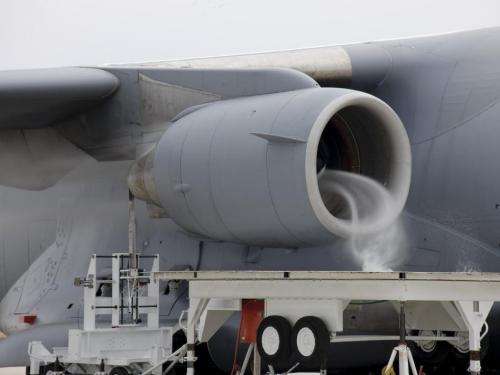Image: Engine test with a cyclonic twist

Water forms an interesting cyclonic twist as it is intentionally sucked into the test engine of a U.S. Air Force C-17 transport aircraft during the VIPR project engine health monitoring tests conducted by NASA Dryden. The water was contained on a special platform built by NASA Dryden's Fabrication Branch for the tests.
NASA's Aviation Safety Program is developing technology for improved sensors to help spot changes in vibration, speed, temperature and emissions which are symptomatic of engine glitches.
These advanced sensors could alert ground crews to problems that can be eliminated with preventive maintenance before becoming serious safety concerns.
Ultimately, the sensors could alert pilots to the presence of destructive volcanic ash particles too small for the eyes to see, giving more time for evasive action to prevent engine damage in flight.
Provided by JPL/NASA

















